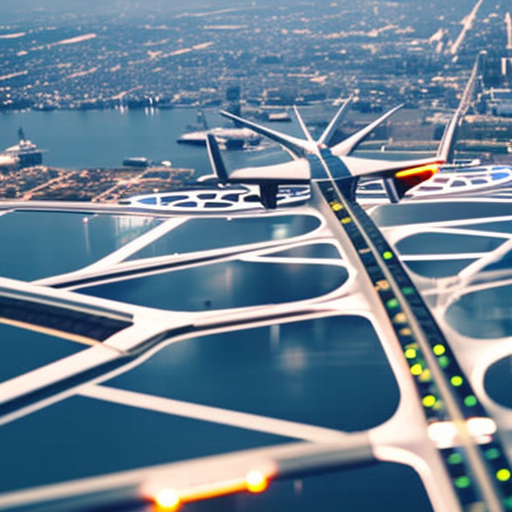Summary:
Urban air mobility (UAM) refers to the concept of using electric vertical takeoff and landing (eVTOL) aircraft to provide efficient and sustainable transportation solutions within urban areas. UAM aims to alleviate traffic congestion, reduce emissions, and improve mobility by utilizing the airspace above cities. This technology has the potential to revolutionize urban transportation and transform the way people travel in the future.
Benefits of Urban Air Mobility:
- Reduced congestion: UAM can help alleviate traffic congestion by utilizing the airspace above cities, bypassing ground-level congestion and reducing travel times.
- Improved mobility: UAM can provide faster and more efficient transportation options, allowing people to travel quickly between urban centers and suburbs.
- Reduced emissions: Electric-powered eVTOL aircraft produce zero emissions during flight, contributing to cleaner air and reduced carbon footprint.
- Enhanced safety: UAM vehicles are equipped with advanced technologies, such as autonomous flight systems and collision avoidance systems, which can improve safety compared to traditional transportation methods.
- Increased accessibility: UAM can provide transportation options to areas that are currently underserved by traditional transportation networks, improving accessibility for all.
Technological Challenges:
While the concept of UAM holds great promise, there are several technological challenges that need to be addressed before it can become a reality on a large scale. These challenges include:
- Battery technology: Developing lightweight and high-capacity batteries is crucial for the success of UAM. Advances in battery technology are needed to ensure that eVTOL aircraft can fly longer distances and carry more passengers.
- Air traffic management: Integrating UAM into existing air traffic management systems is a complex task. Ensuring safe and efficient operations in shared airspace requires the development of new regulations and infrastructure.
- Noise reduction: UAM vehicles need to be significantly quieter than traditional helicopters to be accepted in urban environments. Noise reduction technologies and design modifications are being explored to address this challenge.
- Infrastructure development: Building the necessary infrastructure, such as vertiports and charging stations, is essential for the successful implementation of UAM. Planning and constructing these facilities in urban areas pose logistical and regulatory challenges.
Current Developments:
Despite the challenges, significant progress has been made in the development of UAM. Several companies, including Uber, Airbus, and Boeing, are investing in eVTOL aircraft and infrastructure. Test flights and demonstrations have already taken place, showcasing the potential of UAM. Additionally, partnerships between aerospace companies, urban planners, and regulatory bodies are being formed to address the various aspects of UAM implementation.
Future Outlook:
The future of urban air mobility looks promising. As technology continues to advance and regulatory frameworks are established, UAM has the potential to become a mainstream mode of transportation in urban areas. It could revolutionize the way people commute, reducing travel times, improving accessibility, and contributing to a cleaner and more sustainable urban environment. However, the successful integration of UAM will require collaboration between industry stakeholders, government agencies, and the public to address the technical, regulatory, and social challenges associated with this emerging transportation concept.












